On the banks of Yuta Tnoho two sacred beings meet, a red ñuhu and another golden ñuhu. As they converse, Quetzalcoatl, the feathered serpent hero of the “na savi” or “the people of the rain”, carries on his back another deity magically transformed into sacred mushrooms. Eight high-ranking deities consume these mushrooms and emerge transformed, larger in size, bedecked in sumptuous clothing and new ornaments. The ritual culminates in the birth of a new sun. As the sun reaches its zenith, it too transforms into a mighty warrior shooting powerful arrows of light into the sky.
Human civilizations and funga (see footnote), in particular those that produce mushrooms, have a long and intertwined history, namely in the context of complementary medicine and ceremonial rituals. While the usage of fungi as medicinal solutions has led to important scientific advancements, it has also placed potentially overwhelming pressure on certain fungal species and their natural habitats.
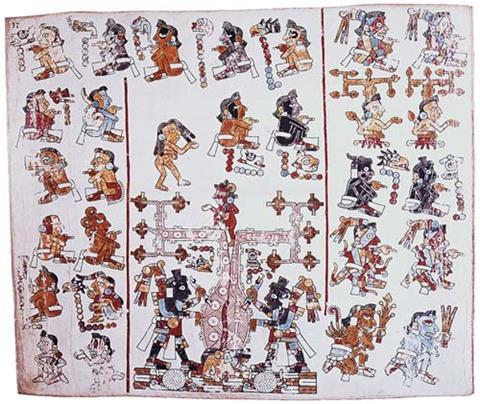
Bewitching moulds and sacred shrooms
One spring afternoon in 1943, a chemist working at a research laboratory in Basel, Switzerland, was forced to interrupt his endeavours and proceed home, “being affected by a remarkable restlessness, combined with slight dizziness.” For him, it all started with a hunch that the experimental substance – stricken from the research program five years earlier owing to insufficient pharmacological interest – could possess undiscovered properties. This chemist was Albert Hofmann, the first person ever to synthesise, ingest, and learn of the psychedelic effects of the once mysterious substance, lysergic acid diethylamide (LSD).

It is now well known that LSD, which is derived from a hydrolysis product of ergotamine, has fungal origins; more specifically, ergotamine, a serotonin receptor agonist, is one of the many alkaloids produced by the fungus Claviceps purpurea, the causal agent of ergotism, an ailment that is driven by the consumption of infected cereals (mainly rye) and characterised by hallucinations, irrationality and convulsions, symptoms which are linked to poisoning by fungal alkaloids. C. purpurea has actually risen to notoriety in prehistoric times for another reason: infected rye bread killed anywhere between 20,000 to 40,000 people in Southern France, in 994 CE. The affliction came to be known as Saint Anthony’s Fire following the success of some monks from the namesake Order in treating the burning sensation in the limbs. Also, the “bewitchings” that led to the Salem witch trials in the United States in 1691 have been attributed to an outbreak of ergotism by some researchers.
But back to LSD. In 1957, riding on the success LSD had shown experimentally to treat alcoholism and schizophrenia, Teonanácatl or sacred Mexican mushrooms found a way to Hofmann’s lab. For the longest time, the existence of these magic mushrooms from Mesoamerica had remained an enigma, relegated to the realm of superstitions by Christian missionaries and Western academics alike. Hofmann and his team went on to isolate, name and synthesise the perhaps most prominent psychedelic mushroom-derived molecules, psilocybin, and psilocin. Psilocybin was granted breakthrough therapy status by the U.S. Food and Drug Administration, in 2018, after successful achievements in depression-related trials.
From being used to treat the sick for thousands of years – e.g., Hippocrates (circa 450 BCE describing the tinder or hoof fungus Fomes fomentarius as an anti-inflammatory and applied it to cauterise wounds – folk medicine has recently drawn more widespread interest from individuals trying to “find the divine” or purely out of curiosity. A new wave of interest in fungal metabolites as biopharmaceutics however promises to change some paradigms.
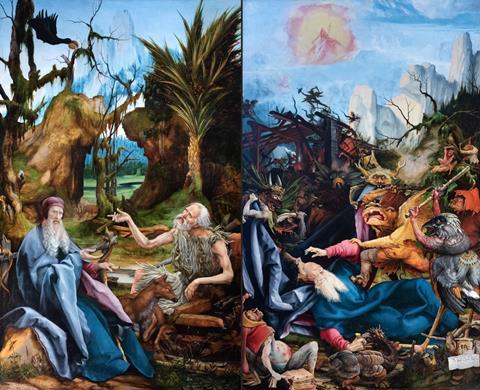
Popularity - a double-edged sword
The American researchers, Dr. Valentina Pavlovna Wasson and her husband, R. Gordon Wasson took up the exploration of magic mushrooms from an ethnographic perspective and went on to become, in all likelihood, the first outsiders ever permitted to take teonanácatl. Maria Sabina, the famed curandero who opened the doors of mushroom ceremonies to the Wassons, laments in a 1979 documentary that she was flooded with requests from foreigners looking for a psychedelic trip either out of curiosity or for spiritual reasons. Before the Wassons, she says, the mushrooms had only been used to treat the sick.
Caption: (1) Valentina Pavlovna and Robert Gordon Wasson, (2) Maria Sabina.
More broadly, it was the discovery of antibiotics like penicillin and cephalosporins or the immunosuppressant cyclosporin that established fungi as an important source of therapeutic molecules. This also raised the question of what other useful medicines might be extractable from fungi. High levels of attention and revenues were generated from fungal-derived drugs, but screening programs decelerated in producing promising new compounds by the late 1990s, leading to a decrease in interest in fungal drug leads. Nevertheless, the exploitation of fungi for biopharmaceuticals has proven of incalculable value: penicillin alone is credited to have already saved millions of lives and continues to do so. In a more recent example, myriocin is a non-proteinogenic amino acid identified about 25 years ago from the insect pathogen Isaria sinclairii, a cordycipitoid fungus. Known for its usage in traditional Chinese medicine to impart “eternal youth”, myriocin has now been approved in more than 80 countries as the first oral medicine for multiple sclerosis.
As commercial players employ novel genomics-based approaches to find the elusive leads for the next blockbuster drug, traditional fungal medicines have attracted the attention of modern medicine once again.
“This attention is a double-edged sword because it brings with it the risk of commercialisation and eventual overexploitation of rare species.”
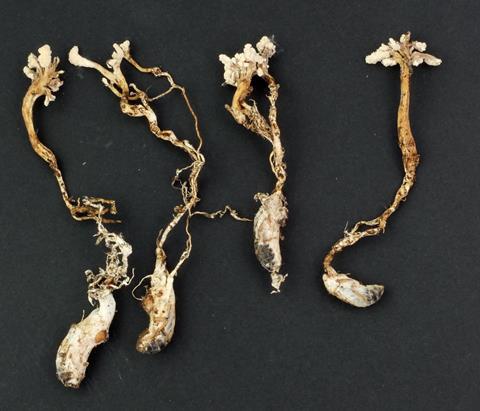
The Cordyceps case
The post-apocalyptic world of the videogame-turned-popular-TV-series The Last of Us, about a mind-controlling fungus, comes in parallel to a surge of interest in a related real-life species. Ophiocordyceps sinensis is a terrestrial fungus endemic to the Himalayas and Tibetan Plateau, previously referred to simply as Cordyceps – the video game and TV series fictional organism is based on a related species in the Cordyceps group.

While this resurgence in attention appears to be part of the so-called new dawn of interest in fungi as medicines, the fruiting bodies of O. sinensis have long been highly prized in traditional Chinese medicine. The book Shen Nong Ben Cao Jing or The Divine Farmer’s Materia Medica Classic (thought to be compiled between 206 BCE-220 CE), widely considered as the archetype of Chinese herbal culture and medicine, included mentions of the usage of Cordyceps and Ganoderma (lingzhi) as treatments to various ailments.
Although extracts and many of the secondary metabolites isolated from Cordyceps fungi (namely cordycepin) have shown a variety of beneficial health effects in vitro and sometimes in animal models, clinical trial-level evidence to support these claims of therapeutic properties is scarce and needs validation. Nonetheless, consumer perception remains a major driver in the nutraceutical industry. Interestingly, this fungus has such a pervasive relation to local culture that illegal Cordyceps trading has even been put forward as having a partial role in fueling some of the Nepalese civil war activities (1996-2006). Common names used to describe O. sinensis (caterpillar fungus, dong chong xia cao, yarsa gumba or keeda jadi) come from the fact that this species parasitises underground lepidopteran larvae, particularly those of Thitarodes spp. (ghost moths).
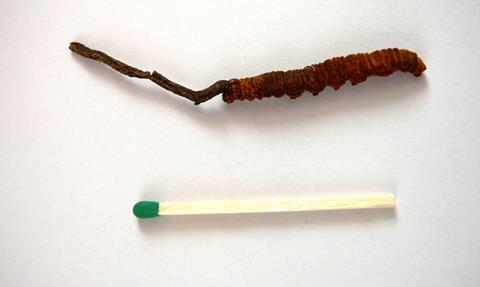
A combination of high-altitude habitat, host specificity, and increasing market value is increasing pressure on naturally occurring Cordyceps to meet the increasing demands of consumers of this fungus. Prices have sky-rocketed in the past decade, with reports of high-quality pieces being sold in China for an astronomical $140,000 per kg. The high market demand for Cordyceps is driving a vicious cycle of overexploitation and decline of populations. Considering the socio-economic aspect of how O. sinensis sustains village livelihoods in the Tibetan Plateau and Himalayan region, it is important to develop sustainable harvesting strategies.
Large-scale artificial cultivation of O. sinensis with larval hosts, which has been recently claimed by industrial players in China, may be a solution to produce high yields of a marketable product, but intellectual property restrictions are a barrier to a wider distribution. More sustainable governance of the natural habitats where O. sinensis grows is undeniably needed. O. sinensis is now categorised as ‘vulnerable’ in the International Union for Conservation of Nature’s Red List, which serves as the main inventory of the global conservation status and extinction risk of biological species.
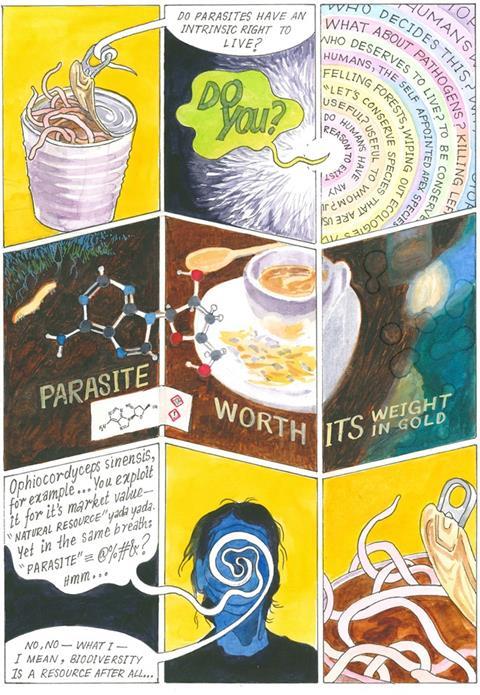
Rediscovering and reviving lost knowledge
Up until now, Indigenous groups have, comparatively, been only scarcely studied from the ethnomycological point of view. In a 2016 study (Santiago et al.) the traditional knowledge of mushrooms in the Mixtec group was evaluated. As an example, the use of certain species like Neolentinus lepideus (mushroom of thunder) as a bioclimatic indicator was documented, and validated the scientific accuracy of this ancient belief – showing that it is accurate and comparable to current knowledge of meteorological phenomena. In another study, four species better known for their use in folk medicine but also an important part of the funga of South India were investigated and found to have significant antimutagenic and anticarcinogenic compounds. Very recently a team of Indian researchers in the tribal zone of the north-west Himalayas identified fourteen wild edible and medicinal mushrooms representing ten families and recommended them for their nutraceutical potential.
It is exceedingly difficult to analyse traditional biomedical knowledge systems using the criteria of Western medicine, which may be deeply biased and alienated from local, Indigenous views. The lack of cultural context can often turn appreciation of traditional knowledge into an extractivist practice. The International Labor Organization (ILO) Convention 19 stipulates that Indigenous peoples will have priority and rights over land, pasture, and natural resources. The rights include the right of the peoples to participate in the use, management, and conservation of resources. However, in the past 35 years, only 24 countries have ratified the Convention, which is insufficient. Worse still, reports indicate that even member states of this treaty appear to continue to focus on revenue collection instead of sustainable collection of fungal specimens with high market value.
Fungal conservation
The International Union for Conservation of Nature (IUCN) Red List is widely recognised as the most comprehensive, objective global approach for evaluating the conservation status of animal, plant, and fungal species, and has a large impact on setting priorities in biodiversity conservation. In State of The World’s Fungi, a 2018 report, scientists found that compared to the 68,000 animals and 25,000 plants, only 56 fungi had been evaluated to assess whether they were existentially threatened.
The first fungus to be recognised for the impact humans were having on its survival was Pleurotus nebrodensis, or the white ferula. This edible mushroom was so beloved by people in Sicily, Italy, that when its numbers began to decline, it was at the centre of popular conversation. From 2006 to 2015 it was the only one of its kind to be globally recognized as endangered.
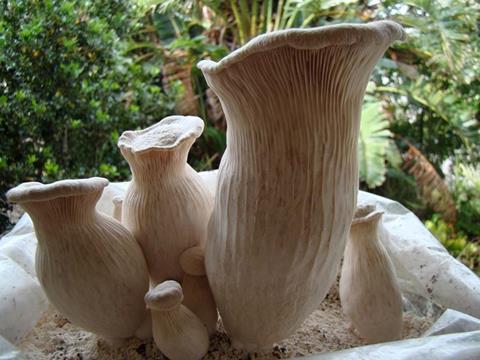
There has been progress, though. The 2023 edition of the Red List was released on December 11, 2023, at the United Nations Climate Change Conference COP28, marking a historic first of a Red List being released during a major climate change event. In the latest IUCN Red List, a total of 794 fungal species now have published threat assessments, of which 393 fungal species have been designated as threatened. Yet still, one of the most biodiverse groups of organisms in the world – more than 1000 new fungal species are described every year, and the most current estimates suggest an astonishing 2 to 6 million extant fungal species – is also the most under-represented taxa in terms of conservation initiatives.
In spite of the tremendous amount of effort that has been put into studying and tackling the problem of bioconservation from an animal and plant perspective, much less is known about the conservation of microbes, including fungi. The decline of field-based empirical investigations noticed in the past few decades can handicap the more popular modelling and data analysis-based studies that influence national and international conservation policies. The Society for Conservation Biology has highlighted the importance of citizen science-based projects in filling this knowledge gap and developed a dichotomous key for mycologists to decide how their projects can benefit from the contribution of the public community at large.
The scarcity of sufficient trained field personnel is still an issue that cannot be fully compensated by citizen science alone. Perhaps this is where organisations like the Society for the Protection of Underground Networks (SPUN) can pitch in with a dedicated global network of field specialists supplemented by youth awareness programs.
Recognising the impact of popular attention on conservation efforts, IUCN has been maintaining a list of “Amazing Species” as an initiative “to increase awareness of the enormous variety of life on our planet and raise the profile of the threatened species” since 2011. Out of the 561 species currently listed by IUCN as Amazing Species, 459 are animals, 99 are plants and a mere three are fungi. This is good, but still only a start.
One of the “Amazing Species”, Poronia punctata, commonly named .nail fungus. for its distinctive appearance, similar to a flat-headed nail, is a coprophilous fungus that is important due to its role as an indicator of ecological health (Ceci et al, 2020) and for its potential use in the pharmaceutical industry (Granito and Lunghini 2006). A 2012 news article talked about a sighting of the elusive Poronia punctata for the first time after 1944 in Norfolk County, England, sparking hope and interest in the scientific community.
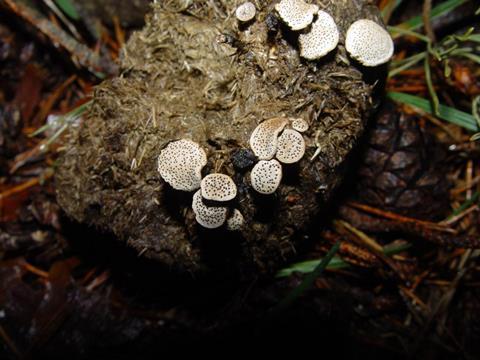
To cope with interference competition, P. punctata produces antibiotics and other secondary metabolites of pharmaceutical importance, such as punctatins and isoepoxydon, to inhibit the growth of other mycelia. Punctaporonins from other fungal species have been reported to have potent effects on reducing triglycerides and total cholesterol at the intracellular level (Wu et al 2014). Jonathan Spencer, Head of Environment and Planning, Forestry Commission, England was quoted as saying that ”the peculiar way it competes with other bacteria and fungi in the dung, using antibiotics, is new to science and only just beginning to be explored.” Conservation of P. punctata remains important due to its role as an indicator of ecological health as well as for its unexplored potential as a bioresource.
The far-reaching problem of fungal infections
Not all fungi are benign. A minority of fungal organisms are pathogens, and unfortunately constitute a relentless challenge to human, animal, and plant health. In 2022, the World Health Organization released the first-ever priority list of fungal pathogens, which is expected to grow with ever-increasing global temperatures owing to climate change and fast fungal adaptation to the “new normal”. Furthermore, at least 125 million tonnes of the top five food crops worldwide – rice, wheat, maize, potatoes, and soybeans – are destroyed by fungal diseases every year. Common fungal infections are becoming resistant to existing antifungal drugs driving the need for new drug leads. Interestingly, the source for some of the currently available antifungals, namely echinocandins such as caspofungin, micafungin, and anidulafungin, are natural products of fungi themselves. To take the Persian poet Rumi slightly out of context, the cure for the pain lies in the pain.
Overuse of antibiotics and antifungals is however disrupting the microbiome (and mycobiome) of otherwise healthy individuals, wiping out all good microorganisms and exposing the body to invasive fungal infections. Moreover, the rise of antifungal-resistant strains means that a niche health scare could turn into a global pandemic at any time. Incorrect disposal of pharmaceuticals and their by-products during manufacturing is an additional and alarming problem that leads to the evolution of pathogenic and drug-resistant strains even prior to infection. Here, again, traditional fungal medicines have attracted the attention of researchers as a potential medicine cabinet to mitigate these far-reaching problems.
In his book Mycelium Running: How Mushrooms Can Help Save the World, Paul Stamets wonders what would happen if there was a United Organization of Organisms, where each species gets one vote. Would we, humans, be voted off the planet as a virulent species? The anthropocentric and utilitarian argument of conservation crumbles at a touch merely by flipping the tables and asking who or what is worth conserving and for whom. The conservation of endangered fungi is an urgent and often overlooked issue. The exploitation of commercially relevant fungal species, driven by market demand and traditional medicine practices, puts entire ecosystems at risk.
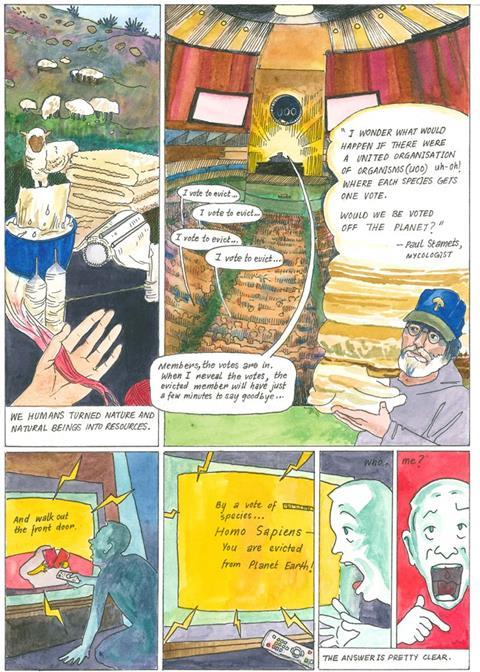
In the Codex Yuta Tnoho (15-16th centuries), it is mentioned how the Mixtec gods performed rituals associated with corn, pulque, and mushrooms that would lead to the dawn or first sunrise in the current era. The story concludes with a concept central to the Mesoamerican worldview—the concept of duality. Light and darkness, day and night - the balance between opposites in the natural world. The blurred boundaries of the sacred and the empirical are universal in Indigenous knowledge systems across geographical boundaries but have perhaps not been sufficiently recognised or tested by the so-called Western science. Examples abound on how fungi and ethnomycology have permeated human cultures in the form of conventional or complementary medicine – fungal alkaloids and sacred mushrooms, mentioned here, are simply two of those examples.
It has become evident that systematic data on endangered fungi is essential, as are studies on fungal population trends. This can lead to the implementation of conservation strategies that should integrate local knowledge and sustainable practices. Additionally, the development of synthetic biology and biotechnology approaches can provide alternative means to obtain valuable compounds from fungi while minimising ecological harm. By safeguarding endangered fungi, we protect the delicate balance of ecosystems and ensure the long-term availability of their valuable contributions to medicine and ecological stability.
Footnote:
“Funga”: Fungi were recognised as a separate kingdom in the late 1960s after decades of being classified as plants, hidden in the term “flora and fauna” popularised by Carl Linnaeus in the 18th century. The term clearly does not reflect the importance of fungi, but such recognition has been slow to seep into policy. Environmental laws, international biodiversity conventions, and treaties have not yet caught on to the “third F” (“Funga”) making it challenging for conservationists to obtain legal protections for fungal species. The efforts of mycologist Giuliana Furci (Fungi Foundation) were instrumental in pushing Chile to become the first country in the world to protect fungi by law.


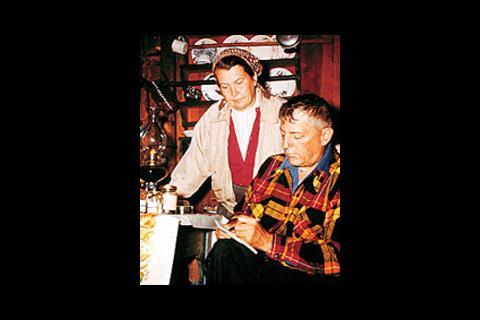




No comments yet